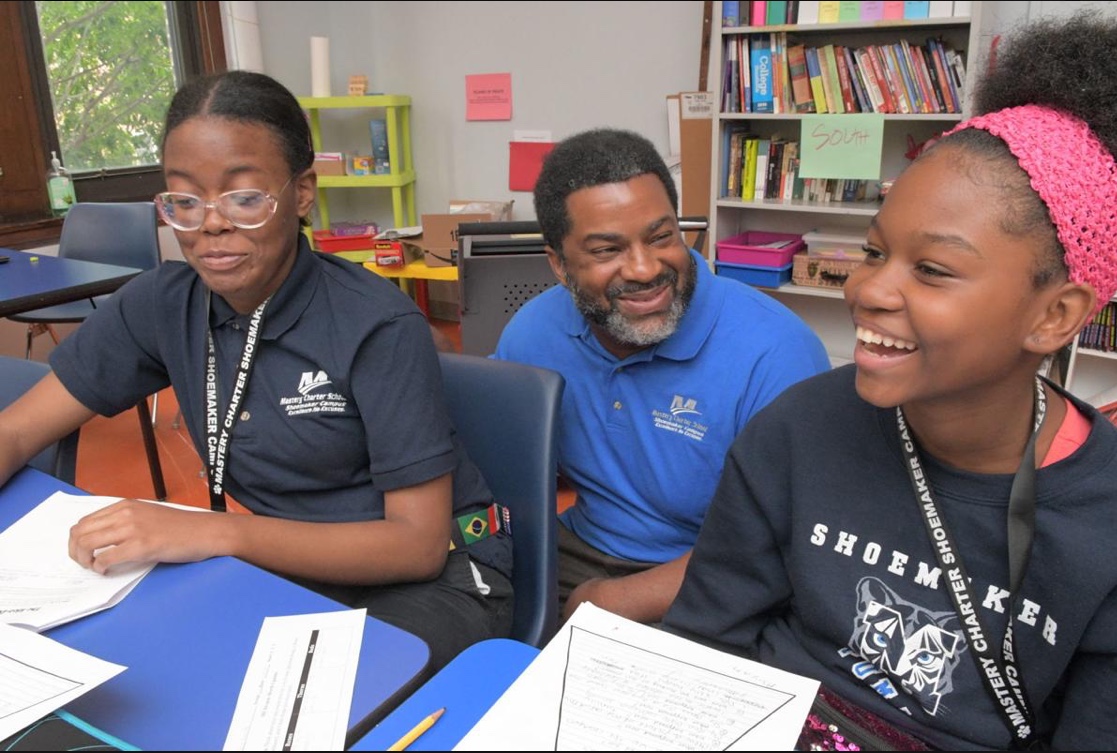Diversity is growing among students in most U.S. schools, but not among teachers, The Washington Post reports.
Only one-tenth of 1 percent of Latino students attend a school system where the portion of Latino teachers equals or exceeds the percentage of Latino students, according to the Post’s analysis.
For black students, that figure is 7 percent, while for white children, it’s nearly 100%, the newspaper reported.
“Representation absolutely matters and it matters for almost every educational outcome you can think of,” Seth Gershenson, a public policy professor at American University, told the Post.
In Chicago Public Schools, the district school board recently held a hearing with stakeholders who said there aren’t enough teachers of color in the district and questioned why the ones who have worked have left, the Chicago Sun-Times reported.
While only 10% of the district’s students are white, half of its teachers are, according to the Sun-Times. “We’re down to only 20 percent of our educators in CPS being black. That’s unacceptable,” Chicago Teachers Union chief of staff Jennifer Johnson said at the hearing, according to the newspaper. “I was often the only black educator that many of my students saw in the high school where I taught.”
More from DA: Are districts doing enough to fight bias and hate speech?
In Rhode Island, Johns Hopkins University researchers found that lack of diversity among teachers at Providence Public Schools was a major concern, but it that was not being address by education leaders, according 89.3-FM, The Public’s Radio.
The state education department, which took over the district this fall, says it plans to address the issue, the station reported.
‘School-to-activism pipeline’
In Pennsylvania, Sharif El-Mekki, principal of Mastery Charter Schools-Shoemaker Campus in The School District of Philadelphia, helped created The Fellowship: Black Male Educators for Social Justice to inspire younger Philadelphia students of color to consider teaching.
A few years ago, El-Mekki had discovered a difference between two groups of teaching colleagues: white women and black men, he told District Administration last winter.
“The white women remember being approached in elementary school about becoming a teacher,” El-Mekki said. “Black males weren’t approached until after college.”
More from DA: How states are strengthening ethnic studies courses
The fellowship, which links teaching to social justice on a pathway that El-Mekki calls the “school-to-activism pipeline,” has arranged for black male college students to teach summer school and for black high school boys to serve as teaching assistants.

In Maryland, the underrepresentation of male teachers of color inspired a group of educators in Montgomery County Public Schools to launch The BOND Project (Building Our Network of Diversity), which develops recruitment, retention and mentoring strategies for a district where approximately 400 out of 13,000 teachers are African-American, Asian or Hispanic men.
“We can look male educators of color in the eye and say, ‘You belong here. You are welcome here, your are understood here, we need you here,’” Daman Harris, a BOND leader and assistant principal at Wheaton Woods Elementary School, told DA. “That’s part of the message that can differentiate my district from a neighboring one that pays just as much. Or where test scores are just as good.”
Eye-opening bus rides
In North Carolina, Gov. Roy Cooper has created a task force to increase diversity among the state’s teachers, WUNC-FM reported.
“I think some of the answers are going to be pretty simple, and it’s going to be about implementation, But a lot of it is about recruiting,” Cooper said at a recent education summit, according to the station.
In Tennessee’s Hamilton County Schools, new teachers and veteran educators take neighborhood bus tours to gain a better understanding of implicit bias and of their students, regardless of whether the children come from affluent or economically disadvantaged areas, DA reported in September.
“It makes a teacher think more about those first day of school questions, such as: ‘Where did you go on vacation?’ or ‘How great was your summer?’” Erin Kirby, a new teacher induction specialist, told DA. “Not all kids experience that.”
More from DA: How educators are diversifying esports







